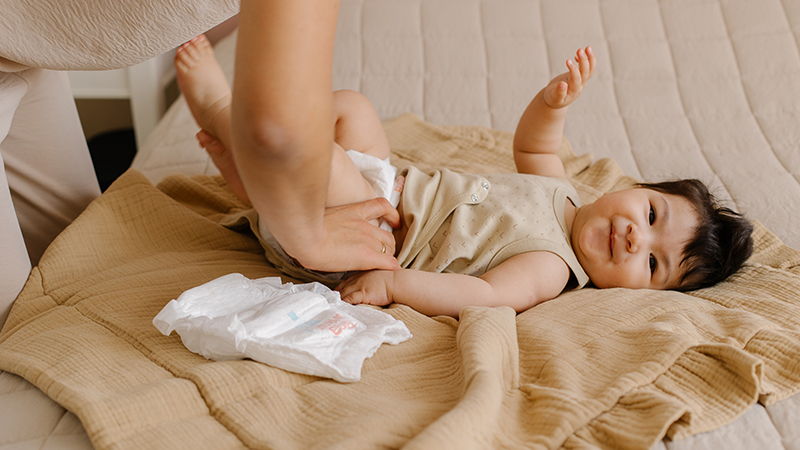I Have a Herniated Disk. Now What?
Treatment Options for Spinal Disk Problems
Published October 2023
If you have a herniated disk — also referred to as a slipped, ruptured or bulging disk — you are not alone. This is a common condition, and most people do not experience any symptoms. However, in some people, a herniated disk can cause pain, numbness or weakness in the back, neck or extremities.
Spinal Disks 101
Most herniated disks happen in your lumbar spine and neck.— Najib El Tecle, MD
Your spine is made up of 33 bones called vertebrae. Between most of your vertebra is a round disk that acts as a cushion. The disks prevent bone from rubbing against bone. At the same time, they allow for flexibility throughout your neck, and upper and lower back. Similar to a gumdrop, each disk has a thick outer shell and gel-like center. The shell or outer layer is made from tough collagen fibers and is called annulus fibrosus. The soft center is known as nucleus pulposus.
What Causes the Bulge?
When the nucleus pulposus (gel-like substance) in your disk starts to protrude out of a weakened part of the shell, or leaks from a tear or crack in the shell, it can form a bulge. If this bulge juts out far enough, it can touch or pinch a nerve or ligament, causing pain.
This can happen due to several factors, including:
- Age-related wear and tear: Over time, your disks naturally weaken, making them vulnerable to herniation. Age is the most common reason for disk decline.
- Repetitive stress: Activities that involve excessive bending, lifting or twisting can lead to disk herniation.
- Excess weight: Carrying extra body weight puts more strain on your spine and disks.
- Smoking: Smoking affects your disks’ ability to absorb key nutrients from your blood.
- Medical conditions: Osteoporosis and arthritis are linked to disk herniation.
- Trauma or injury: A sudden impact or strain on the spine can cause disk herniation or may cause an already herniated disk to worsen.
“Most herniated disks happen in your spine’s most mobile areas, which are the neck and lower back,” says Najib El Tecle, MD, a spine surgeon at Northwestern Medicine. “Throughout the day — whether it’s picking up something or looking at your cell phone — you are constantly moving your lumbar spine and neck.” Dr. El Tecle explains that you may have a herniated disk and not even know it. “If it isn’t causing pain or a neurological problem, we leave it alone. No treatment is necessary,” he says.
What Are the Symptoms?
The symptoms of a herniated disk vary depending on its location in the spine and the extent of damage to the disk. “Disk herniations in the neck, when severe, can compress the spinal cord or nerve traveling down the arms, whereas disk herniations in the low back will typically compress nerves that travel down to your legs,” says Dr. El Tecle.
Some common symptoms include:
- Back or neck pain near the herniated disk.
- Radiating pain. If the disk herniation touches or pinches a nearby nerve, it can cause pain, numbness or tingling that radiates into the arms or legs.
- Hip pain or sciatica.
- Weakness in the arms or legs.
- In severe cases, a herniated disk can cause loss of control over your bladder or bowel functions. This requires immediate medical attention.
Treatment Options
In most instances, a painful herniated disk can be treated without surgery. Your body will work to repair the damaged disk by reabsorbing the protruding fragment. This can lessen the pressure on a nerve. Inflammation around the affected nerve can also decrease over time.
Ways to help your body heal and manage pain include:
- Rest. This may involve taking a few days off from work or other activities that cause pain. Avoid long periods of bed rest, though, so your body doesn’t get too stiff.
- Ice and heat. Applying ice or heat to the affected area can help reduce pain and inflammation.
- Medication. Over-the-counter pain relievers, such as ibuprofen and naproxen can help relieve pain and inflammation. In some cases, strong pain medication or steroids may be prescribed.
- Physical therapy can help strengthen the muscles around your spine, relieve pressure on your nerves and improve your flexibility.
- Epidural steroid injection that goes directly into your spine to help reduce inflammation and pain.
Surgery
If you have concerning signs, such as weakness or loss of control of your bowel or bladder, or if you have tried nonsurgical options and are still experiencing debilitating pain, your physician may recommend that you see a spine surgeon. According to Dr. El Tecle, there are a number of surgical procedures for a herniated disk, depending on its location.
- Diskectomy: Removal or partial removal of a spinal disk, which can be done using an endoscopic, minimally invasive, or open-surgical technique.
- Disk replacement surgery: Replacement of a cervical or lumbar disk with an artificial disk. Only a few patients are eligible for this procedure based on the location of the herniated disk and lack of success with other treatment options.
- Other surgeries such as foraminotomy, laminectomy or spinal fusion may be considered as well.
Before going forward with any type of noninvasive therapy or surgical treatment, talk to your physician. With proper care and medical guidance, people with herniated disks can find pain relief and enjoy an improved quality of life.






